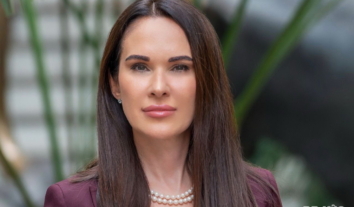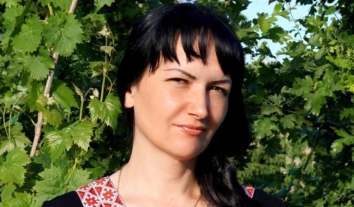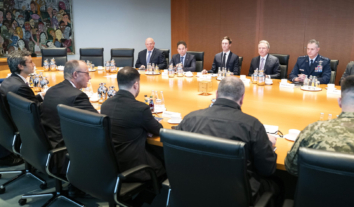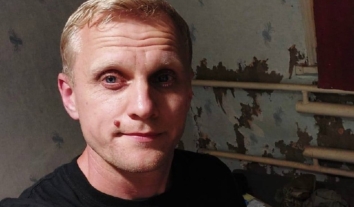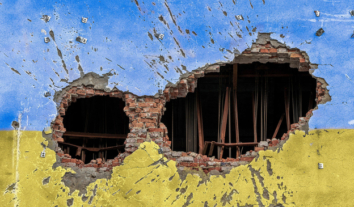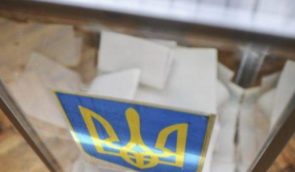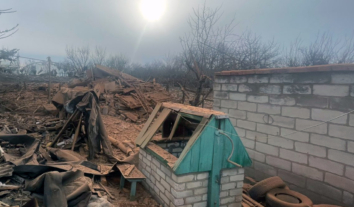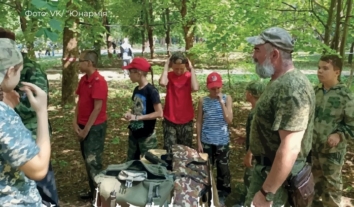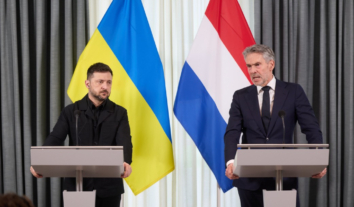Transferring prisoners from DPR to Ukraine
The closer you are driving up to the borders of the breakaway republic, the more artifacts of war you come across. You see checkpoints, armed military men in armor vests, fire trenches, and slight nervousness.
The latter is quickly noticed in some participants in the joint group of the National Preventive Mechanism (NPM) and the Office of the Ombudsperson, who are to take away the next group of prisoners from the “DPR” in a few hours.
The NPM Department and the Office of the Ombudsperson together with the State Penitentiary Service, the Security Service of Ukraine (SBU), and with the mediation of the UN Monitoring Mission succeed in carrying out the process, which should have been implemented by the Justice Ministry of Ukraine following the order of President Poroshenko to evacuate the penitentiary institutions in the occupied territories.
The militants deliver the prisoners to the government-controlled territory the second time already after the months of talks. The first time they delivered nine foreigners pending extradition. This time, the militants suggested delivering the so-called transit prisoners from the Donetsk remand prison.
“Why do we need to take away prisoners from the other side?” One of the soldiers, who will transfer us to a place of delivery in half an hour, asks, talking straightly with the Ombudsperson’s representatives.
“Ukraine is responsible for them. We will pay compensation through the European Court of Human Rights if something happen to them,” Commissioner’s representative for the NPM implementation Yuri Belousov explains.
“Everything depends on the consequences of violations. Ukraine may pay 20,000-30,000 euros. But the sum will be adjudged in each specific case,” Ombudsperson Valeria Lutkovska adds.
The servicemen ask to carry out transfer directly on the road and not to go on the grass or overgrown vegetation in any case. This is dangerous because of trip wires. Everybody agrees with the suggestion.
We leave our driver at the last checkpoint and change to an armored personnel carrier. We are guarded by the SBU anti-terrorist center officers, wearing camouflage, thick body armors and carrying weapons. We are moving forward slowly, followed by a prison truck and other transport, involved in the operation.
Driving by the checkpoint, we see the long queue of cars stretching for over than a kilometer. Many cars stand with open doors and windows. People, toiling in the heat, look at our column of cars and do not understand why it goes towards “DPR.”
It’s too hot for special operations officers wearing camouflage in the armored personnel carrier. It is so not only because of the terrible heat, but because the militants with prison truck are being late for five minutes already. As they say, they do not see our column and ask us to come closer. The Commissioner’s representative explains on the phone that we are in the same place as were the first time. Everything is alright. A few minutes later, the military sees the convoy on his screen.
Today’s prisoner transfer has been made possible due to the personal safety guarantees of the Ombudsperson. Valeria Lutkovska, having no weapons and not even wearing a bulletproof vest, came to the scene of exchange along with her three co-workers and me as the monitor of the National Preventive Mechanism. Thus, we were a living assurance that the agreements would be honored by the Ukrainian side.
“When the issue of the first transfer was discussed, both sides had distrust. There were questions about the security guarantees and possible attacks or provocation on part of militants,” Valeria Lutkovska says.
Two paddy wagons, one belonging to the breakaway forces and the other belonging to the State Penitentiary Service of Ukraine, are placed against one another. It’s easier for security officers to control the prisoner transfer in this way.
As a rule, heavy bags emerge from paddy wagons first, and then the prisoners themselves appear. They are pale, tired and thirsty. The Ukrainian servicemen help them carry heavy luggage.
A shaven-headed man has just come out of prison truck. He is dressed in a white shirt with red stripes on the sides and black jeans. The man takes his white cap off and breathes heavily. The sweat is running down his thin face. The Penitentiary Service employees give him a bottle of water.
Since the beginning of the military conflict, all these prisoners have stuck in transit cells, unsuitable for a long stay.
“The remand prisons have the transit cells, where people do not stay for a long period. Therefore, there is usually a large number of people, and conditions are worse than in other cells,” Yuri Belousov explains to me.
Some of the prisoners arrived in Donetsk to undergo forensic medical examination in their cases. The other part is to be transferred to other penal institutions.
The successful prisoner transfer testifies to the fact that the other party is ready to continue the dialogue, Yuri Belousov says.
All 20 convicts will be placed in the Mariupol remand prison. The fate of each prisoner will be decided there.
%%GALLERY%%
First and foremost, in the future, the National Preventive Mechanism would like to take away from the occupied territories the prisoners suffering from serious diseases such as HIV/AIDS, tuberculosis, people with disabilities and prisoners serving life-sentences. The number of prisoners, who stay in places of detention in the “DPR”, is unknown. However, in any case, the clear prospects for their return to the territory, controlled by Ukrainian government, are looming now.





















